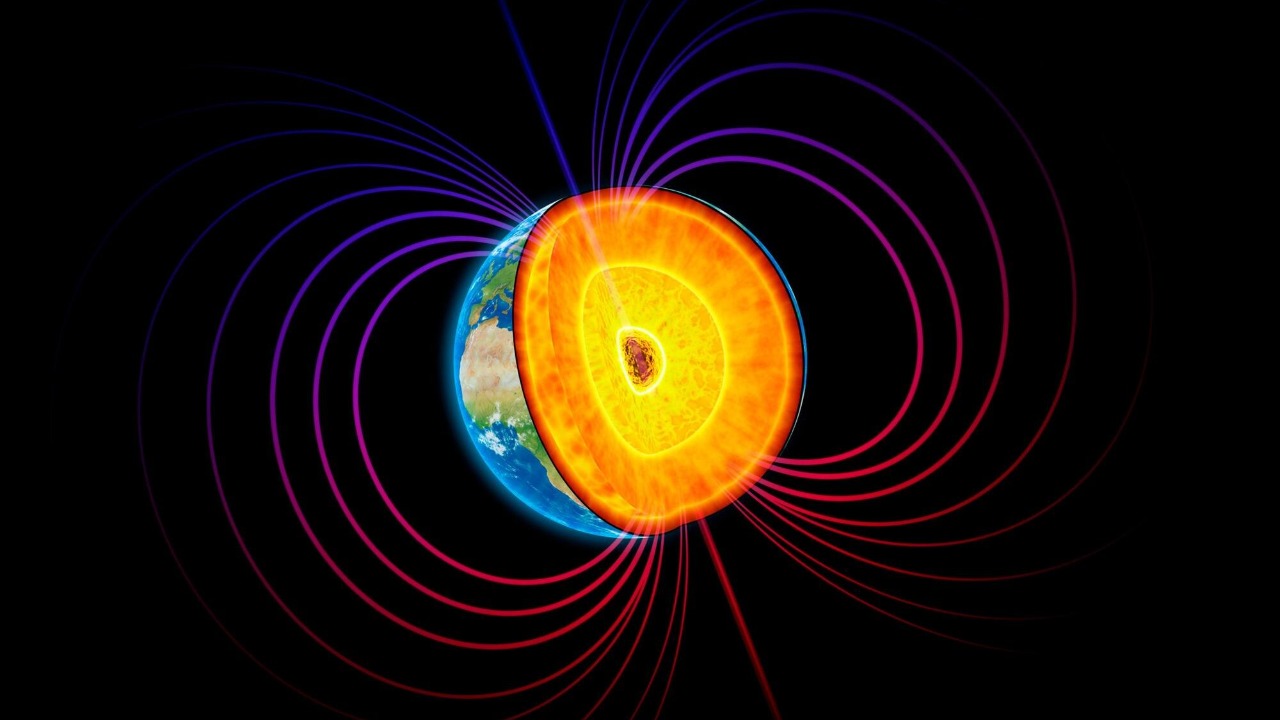
Recent scientific observations have revealed a growing weak spot in Earth’s magnetic field, posing significant risks to astronauts in space. This anomaly in our planet’s protective shield could expose spacefarers to heightened levels of harmful radiation during missions beyond low-Earth orbit. The development underscores the urgent need for enhanced protective measures in space exploration.
Understanding Earth’s Magnetic Field
Earth’s magnetic field serves as a protective barrier against solar and cosmic radiation. This shield is generated by the movement of molten iron within the planet’s outer core, creating a magnetosphere that extends into space. The stability and historical strength of this field are crucial for life on Earth and for the safety of astronauts in space.
However, recent observations have highlighted vulnerabilities in this protective shield. A decrease in magnetic intensity, often referred to as the South Atlantic Anomaly, has been detected, indicating a developing weak spot in the Earth’s magnetic field.
The Emergence of the Weak Spot
The South Atlantic Anomaly is a region where the Earth’s magnetic field is notably weaker. Satellites like Swarm have been instrumental in detecting and tracking this anomaly’s growth over recent decades. The data collected has shown a reduction in magnetic field strength by up to 10% in affected regions since the 1970s.
This weakening of the magnetic field in the South Atlantic region poses a significant risk to space missions and satellite operations. The anomaly allows for increased penetration of solar particles and cosmic rays into low-Earth orbit, directly endangering astronauts and sensitive satellite electronics.
Causes Behind the Weakening
Geophysical theories suggest that the weak spot is due to irregularities in the flow of Earth’s molten core. These irregularities, potentially influenced by deep-Earth convection patterns, can cause fluctuations in the magnetic field. Some scientists believe that the current weakening may signal the early stages of a magnetic field reversal, a phenomenon that has occurred multiple times in Earth’s history.
However, it’s important to note that a magnetic field reversal is not imminent. Paleomagnetic studies have shown past instances of the magnetic field weakening and subsequently recovering. This historical context helps scientists understand the potential trajectory of the current anomaly.
Risks to Astronauts in Space
The weak spot in the Earth’s magnetic field allows for increased penetration of solar particles and cosmic rays into low-Earth orbit. This poses a direct risk to astronauts on the International Space Station (ISS), who could be exposed to elevated doses of radiation during solar storms when passing over the anomaly.
Long-term exposure to such radiation levels can have serious health implications. These include a higher risk of cancer and cognitive effects from cumulative radiation, particularly for astronauts participating in long-duration missions to the Moon or Mars.
Current Monitoring and Research Efforts
The European Space Agency’s Swarm mission, launched in 2013, continuously maps the Earth’s magnetic field to track the expansion of the weak spot. This data is crucial for understanding the anomaly’s growth and for developing strategies to mitigate its effects.
NASA and other agencies are also working to integrate magnetic data into space weather forecasting. This allows for real-time safety alerts for astronauts in space. Ground-based observatories and upcoming satellite missions are also contributing to efforts to predict further weakening trends.
Implications for Future Space Exploration
The weak spot in Earth’s magnetic field complicates future space missions, including NASA’s Artemis program and private space ventures. Trajectory adjustments may be necessary to minimize exposure to harmful radiation. The anomaly also poses a risk to technological systems, potentially disrupting satellite electronics and GPS systems passing through the region.
If the weak spot continues to grow, the safety of space travel could be significantly impacted. This underscores the need for international cooperation in developing mitigation strategies and enhancing protective measures for astronauts in space.
More from MorningOverview